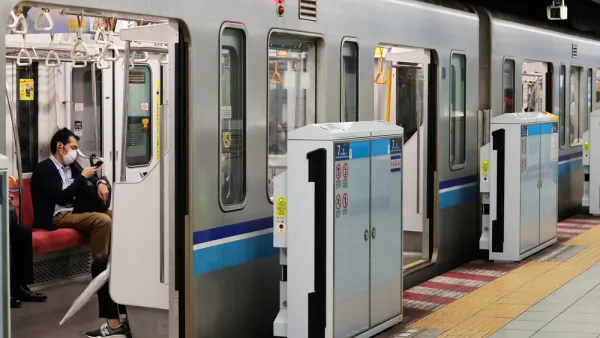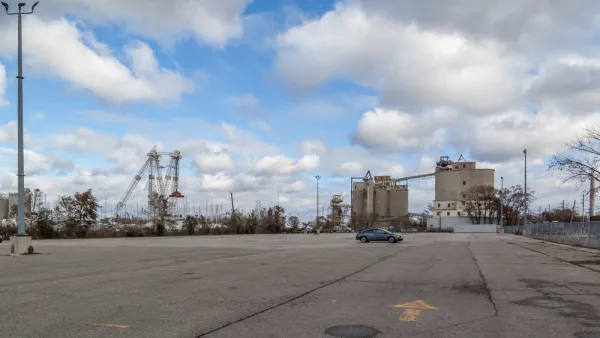Google subsidiary Sidewalk Labs has partnered with Waterfront Toronto to deploy smart city innovations in the redevelopment of the Quayside district along Toronto's Eastern Waterfront.

An interview with Rit Aggarwala, chief policy officer of Sidewalk Labs, delves into the company's experiment with smart city planning in Toronto's Quayside district.
Katherine A. Peinhardt writes a substantial introduction to the interview, writing for the Project for Public Space, so the discussion focuses on place, and technology's ability to rob places of charm. From the introduction:
But building great public spaces, more than any technology, requires a genuine focus on place. PPS has extensive experience in making places like waterfronts vibrant, people-centered places; keeping sight of local identity and prioritizing activity in a space are essential components of any successful project. If they are to take root, urban innovations — from autonomous vehicles to digital wayfinding — must keep these considerations and the community close at hand.
The interview starts with a discussion about the initial steps in Sidewalk Labs' process in Quayside before digging into what to expect from future steps in the process as well as from the technology that will eventually be deployed as redevelopment takes shape. Here's a sample of the discussion, as it focuses on the intersecting forces of real estate and transportation:
Q: How will the big plans for transportation outlined for Sidewalk Toronto support existing modes in the city, like the Subway and its streetcar?
A: Mobility is one of the areas where we have the potential to make a massive difference. It does hinge on an extension to existing modes of transit, as well as the creation of new forms of urban mobility. The fact is that none of what we hope for this site can be realized unless we get the existing transit system expanded into our site. You can’t create a successful urban neighborhood that has an entirely different transportation system. What we envision is a place where we can use both the power of overall real estate development and perhaps some innovative financing tools to work with the city, accelerating what the city already wants to do.
[Editor's note: the source article is from December—a bit dated by Planetizen standards but shared for its ongoing relevance to questions about the shape cities will take as "smart cities" technology evolves and takes shape in cities.]
FULL STORY: Google’s Urban Experiment in Toronto: A Q&A with Sidewalk Labs’ Rit Aggarwala

National Parks Layoffs Will Cause Communities to Lose Billions
Thousands of essential park workers were laid off this week, just before the busy spring break season.

Retro-silient?: America’s First “Eco-burb,” The Woodlands Turns 50
A master-planned community north of Houston offers lessons on green infrastructure and resilient design, but falls short of its founder’s lofty affordability and walkability goals.

Delivering for America Plan Will Downgrade Mail Service in at Least 49.5 Percent of Zip Codes
Republican and Democrat lawmakers criticize the plan for its disproportionate negative impact on rural communities.

Test News Post 1
This is a summary

Test News Headline 46
Test for the image on the front page.

Balancing Bombs and Butterflies: How the National Guard Protects a Rare Species
The National Guard at Fort Indiantown Gap uses GIS technology and land management strategies to balance military training with conservation efforts, ensuring the survival of the rare eastern regal fritillary butterfly.
Urban Design for Planners 1: Software Tools
This six-course series explores essential urban design concepts using open source software and equips planners with the tools they need to participate fully in the urban design process.
Planning for Universal Design
Learn the tools for implementing Universal Design in planning regulations.
EMC Planning Group, Inc.
Planetizen
Planetizen
Mpact (formerly Rail~Volution)
Great Falls Development Authority, Inc.
HUDs Office of Policy Development and Research
NYU Wagner Graduate School of Public Service




























